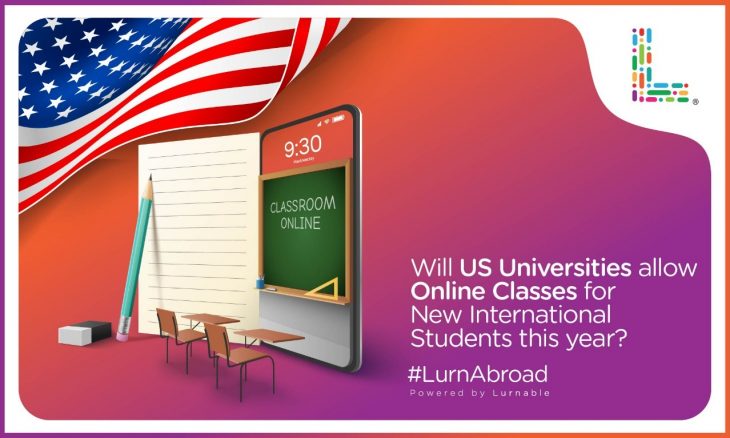Before the pandemic, American colleges and universities allowed international students to study online for only one class per term. But COVID-19 changed the picture completely as flexibility was the only option for higher education institutions to retain business. The US government allowed students from overseas to enroll in multiple online classes.
But things can get complicated if you plan to start your study abroad journey in the US this fall. A lot of factors will determine your eligibility to take online classes. You may expect to face some challenges while starting with the study as international travel is still restricted, and there are delays in securing study visas. Let us explain the facts you must know if reaching for your fall term seems to be a distant possibility.
A FULL ONLINE SCHEDULE IS NOT POSSIBLE
According to recent government guidelines, new international students coming for academic studies (F-1 nonimmigrants) or vocational studies (M-1 nonimmigrants) cannot land in the US this fall if they enroll in a fully online programme. But those unable to enter due to reasons such as inability to secure a visa, travel restrictions, and health issues may get options to take online classes. However, the decision depends on their school.
For example, the University of Houston is letting students start their programme remotely without the F-1 visa status. International students planning to study at San Jose State University in California can take online classes back home and come to the campus for the spring semester.
Many colleges and universities are taking up partnerships with institutions overseas to provide the American experience for new students. They can complete their first semester at an institution back home, taking classes in person, and even staying in dormitories. With such options, you can at least start your experience with an American curriculum. The other alternative is to defer your admission to spring 2022, but it will depend on programme availability at that time.
HYBRID CLASSES ARE ACCEPTABLE
While you may not be eligible for a fully online course of study, you can try your luck with a hybrid programme. It is a combination of face-to-face interactions and online learning. As a new international student this year, you will be allowed to enter the US if you take up a hybrid programme with some requirements for in-person learning.
If entering in F-1 status for the first time, you will have to enroll in at least one in-person or hybrid course to meet the full-time enrollment requirements, which requires 12 units for undergraduates and nine units for graduates. Taking hybrid classes will allow you to maintain the nonimmigrant visa status as you study in the US.
Study abroad experts emphasise the value of staying in close touch with your school because policies can change at any time. Universities are also doing their bit by updating their websites, sending emails to potential students, and holding virtual town halls via Zoom. Most American institutions expect to transition back to on-campus learning this fall.
International students already in the country and those with a valid F-1 visa can return for classes once they commence. But the journey can be a tad challenging for first-timers. But there is a ray of hope as you still have options to study with a prestigious university here. Everything boils down to knowing the facts and choosing the right alternatives.

If you are considering studying abroad why don’t you discuss your prospects and opportunities with experts at Lurnable’s dedicated study abroad counselling division LurnPathways?





